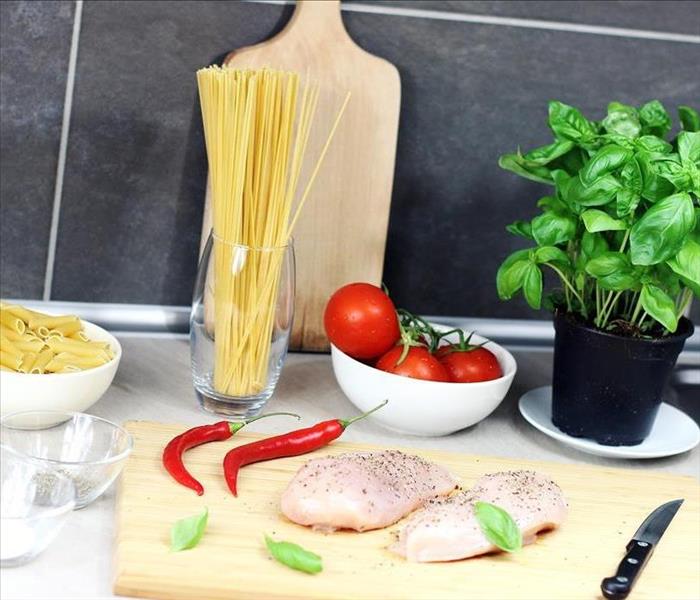The 1 spot in your Westminster kitchen that may be dirtier than a toilet
6/11/2018 (Permalink)
The KITCHEN, the place many find solace and comfort. The part of the home which brings Westminster families together...is also the heart of its germs. According to Dr. Charles Gerba, a microbiologist and professor at University of Arizona, between prepping and cleaning, a kitchen is a veritable incubator for bacteria. See the list of the 5 areas which are most contaminated by Dr. Gerba:
1. Kitchen Sponge
We all do it - there's a spill on the counter, the food boiled over on the stove, first thing we generally grab is a sponge. We wipe down, rinse and repeat. Then toss the sponge back on the sink until needed again. However, what we now have done is made "bacteria heaven" by having a wet and moist environment soaking up coliform bacteria. Dr. Gerba also found 15 percent of sponges in a random study had salmonella growing on them.
Solution: Use paper towels to wipe up spills. Clean counters with antibacterial kitchen wipe like Lysol, Clorox. Make it a habit to microwave thoroughly wet sponges for 1 to 2 minutes everyday to sanitize them.
2. Kitchen Sink
We probably don't consciously think and process just how much bacteria and germs are going into the kitchen sink on a daily bases. If you do want to take a moment and think back just how much you used your Westminster kitchen sink today or last night, you might be realizing how much raw meat is cut and rinsed off the cutting board into the sink. Or other greasy and unsanitary items. Gerba says there is more "fecal bacteria in a sink than there is in a flushed toilet."
Solution: Wash the sink with hot, soapy water, especially after handling meat and poultry. Every day, wipe out the sink using disinfectant kitchen wipes.
3. Cutting Board
If you thought kitchen sinks were stomach turning just want until we divulge into your cutting boards. With "200 times more coliform bacteria than a toilet seat, cutting boards are hot beds of germs." They are consistently used for cutting meats and poultry, who can carry salmonella and campylobacter bacteria.
Solution: Wash the board in hot, soapy water after each use, then, to kill remaining germs, put it in the dishwasher or disinfect it with bleach ( 2 tablespoons of bleach to 1 gallon of water) or good disinfecting kitchen cleaner like Lysol. To minimize cross-contamination, Gera recommends using colored cutting boards: one for meats, one fore veggies and one for poultry.
4. Fridge Door Handle
Do we really want to go there? YES, we must... The fridge door handle. How many times do you open and look for food (and then tell yourself no and slam it, repeatedly), check food inventory, pull food out and put food away. Maybe you make food and your hands are dirty but you grab the door handle anyways to pull additional recipe items. Or you do contemplate that handle just may be dirty so let's wipe it down. Which you do but with the same sponge that is housing coliform bacteria and salmonella, which was sitting on the kitchen sink that has more fecal matter than a toilet. - I think you can agree, that was a disturbing image.
Solution: Give the handle-and the entire kitchen door-a good wipe-down every day with a disinfecting kitchen wipe. Remember, kitchen wipes are only good for disinfecting a 3-by-3-foot area. Don't try and stretch it!
5. Kitchen Counter
Can you really say you were surprised by this one? If you've ever cooked, chopped vegetables, put together cereal then you've more than likely have put food on the counter. You make a mess and the reach for the aforementioned sponge to clean up the spills from all this stuff. Then add to this, the splashes from the previously talked about germy kitchen sink. That's a lot of germs!
Solution: Use cutting boards as much as possible when preparing foods. Instead of wiping counters with sponges or dish cloths, pick up spills with paper towels and clean counters with disinfecting kitchen wipes.
See full article here: https://www.today.com/food/5-germiest-places-your-kitchen-how-clean-them-t106971?cid=public-rss_20180604






 24/7 Emergency Service
24/7 Emergency Service
